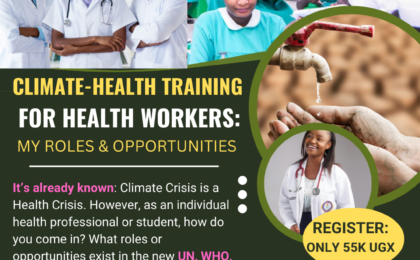Hugging and Cuddling! What are the Health Benefits?
They say that, on average, each one of us needs at least 8 hugs per day to be healthy and live well as humans should; how many do you get? Explore the benefits of hugging and cuddling!
Few days ago, we shared some businesses that were dealing in selling hugs and cuddling at about 80 dollars per hour. Even though benefits or reasons for which clients sought after such services were many, health (especially psychological, emotional and physical) benefits championed the reasons list. Anyway, we briefly looked into the reason why the world has reached to an extent of hugging or cuddling each other for money, swallowed the pain, and moved on.
However, I have felt it very necessary to, at least, discuss the potential benefits of hugs and cuddling from the scientific research point of view so that whether you get hugs freely or at a cost, you are aware of the value or no value you are getting. Is there healing in hugs and cuddling? Let us answer this.
Hugs and cuddles; what are they?

Oxford dictionary defines ‘to hug’ as ‘to put your arms around somebody and hold them tightly, especially to show that you like or love them’ and the same dictionary defines ‘to cuddle’ as ‘to hold somebody or something close in your arms to show love or affection.’ Wikipedia defines a hug as ‘form of endearment, universal in human communities, in which two or more people put their arms around the neck, back, or waist of one another and hold each other closely.’
Depending on the societal context or the situation, hugging or cuddling someone could be classified as love, romance, affection, brotherhood, or just sympathy. According to Duranti (1997), hugging is one of the most common and tolerable form of greeting in all cultures, religions, and nations. In some nations (Brazil, Spain, France, Latin America, and, as informed by my experience, Rwanda), hugging is very common.
While hugging is common, brief and less intimate, cuddling on the other hand is more affectionate and usually takes long time (between minutes and several hours) and can as well involve friendly chatting between the cuddles. In some African countries, public show of intimacy is not accepted or unpopular. While this is mostly about kissing, hugging and cuddling that is intimate may as well fall prey to this opposition.
Nevertheless, Psychologists Simon Nantamu and Davis Rwabu confirm that actually hugging is common in Uganda, especially among people of western region. Anyway, the nature of the hug, distance between the bodies and hips or thighs of the practitioners usually define the meanings of hugs and cuddles. Whatever the case, hugs and cuddles are known in almost all cultures and missing on them is really setting yourself as an ‘odd man out’. Whether it is great or horrible missing these, I leave it up to you.
Health benefits of hugging and cuddling
Besides hugging and cuddling being fibers of our cultural values and great ways of expressing affection and goodwill, their benefits go beyond that, scientists reassure us. According to Light et al., 2004, hugs and cuddles are linked with higher levels of oxytocin hormone and, according to scientific studies, this hormone is amazingly great in social bonding, stress reduction, and mental wellness. Oxytocin (also called ‘love’ hormone or ‘trust hormone’) is linked with stress reduction, mental wellness, love, trust, and social bonding in relationships, and anti-aging (Bartz et al., 2011).
Concerning oxytocin and social bonding, Fuchs et al., 1984 portrayed that, already, oxytocin is physiologically associated with reproduction, influencing lactation and uterine activity. These biological functions, argues Carter (1998), reasonably bond well the mother and offspring enabling the offspring to feed and collect information relating to safety and danger. Williams et al., 1994 proved that oxytocin is responsible for pair bonding and Feldman et al., 2007 and in 2011 added that actually high levels of oxytocin in both the mother and father were associated with greater bonding and communication between parents and child and between parents themselves. In the words of Sarah Yang (2014):
Oxytocin is sometimes referred to as the “trust hormone” because of its association with romance and friendship. It is released with a warm hug, a grasped hand or a loving gaze, and it increases libido. The hormone kicks into high gear during and after childbirth, helping new mothers bond with and breastfeed their new babies.
In relation to stress regulation, Light et al., 2004 emphasizes that oxytocin regulates stress by dampening physiological reactions to stress. For example, high plasma levels of oxytocin are associated with low levels of norepinephrine (the stress hormone), blood pressure, and heart rate. The same stress reducing effects have been reported in rodents (Windle et al., 2004).
About oxytocin and mental health, many scientific studies agree that oxytocin is effectively good at taking care of someone’s mental health. Already, we are aware that both stress and poor social bonding or relationships have negative impacts on everyone’s mental health. The fact that production and release of serious levels of oxytocin reduce stress and improve social bonding, then, at least logically, mental health is positively influenced as well. Olff et al., 2012 cites that administration of oxytocin over some weeks is linked to better results in mental illnesses like schizophrenia and autism spectrum disorder though she further cites that these studies are sparse.
About anti-aging capabilities of oxytocin, many scholar even argue that oxytocin might later be used in aging diseases rather than the uncontrollable and less desirable hormone replacement therapies.
In one study, researchers proved that oxytocin encouraged muscle healing. In another, it was revealed that, posts Yagana Shah (2014) at huffington post, “levels of the hormone drop as we age, and evidence suggests that could be a contributing factor to the deterioration of our bodies as we age. Muscle loss in particular is one of the major side effects of aging, with our bodies losing up to 5 percent of our muscle mass each decade past our 30s.” She goes ahead and narrates:
“Uses of anti-aging molecules have also been associated with higher cancer risk, but researchers are hopeful that oxytocin can be useful in humans without this risk. Oxytocin can certainly make you look younger, some experts say, as the release of the hormone has anti-inflammatory benefits, which fight aging. In the future, researchers say oxytocin could be used to fight other age-related health issues by improving bone health and even being used as an alternative to hormone replacement therapy.”
Take home
We have first agreed that hugging and cuddling are common practices in almost all cultures and religions and thus you won’t be doing unusual or be classified as bizarre if you give and receive them. Secondly, we have realized that oxytocin is released into our blood whenever we sense love, affectionate and safety and various scientific studies have revealed that such times cannot be no better than during hugs and cuddles. Lastly, oxytocin has anti-aging abilities, takes care of stress, increases trust, love, and social bonding, and takes care of one’s mental and heart health.
Therefore, I ask; why not go out, give, and receive hugs, not for cash but freely? Make this world a better and lovely place to be. Nevertheless, what if you really don’t have whom to hug or to give you one? The third monk has answers for you. Markus Juliana adds that ‘holding a hug for an extended time lifts one’s serotonin levels, elevating mood and creating happiness.’ You cannot miss her summarized 10 reasons why you need 8 hugs a day.
NB: Some studies reveal that in some situations, hugs and cuddles can actually produce oxytocin but instead of it positively influencing you, make you distrust and dissociate even more. This is more so if you hug or get cuddled by someone you don’t like or have no emotional attachment (Bartz et al., 2011).
Do you have anything to say or some hugs to offer me? Well, write to thecompletey@gmail.com. You can as well share your comment below; I shall get back to you.
Some References
Olff et al., 2012. The role of oxytocin in social bonding, stress regulation and mental health: An update on the moderating effects of context and inter-individual differences. Elsevier
Bartz, J., Simeon, D., Hamilton, H., Kim, S., Crystal, S., Braun, A., Vicens, V., Hollander, E., 2011a. Oxytocin can hinder trust and cooperation in borderline personality disorder. Soc. Cogn. Affect. Neurosci. 6, 556–563.
Light, K.C., Grewen, K.M., Amico, J.A., Boccia, M., Brownley, K.A., Johns, J.M., 2004. Deficits in plasma oxytocin responses and increased negative affect, stress, and blood pressure in mothers with cocaine exposure during pregnancy. Addict. Behav. 29, 1541–1564.



